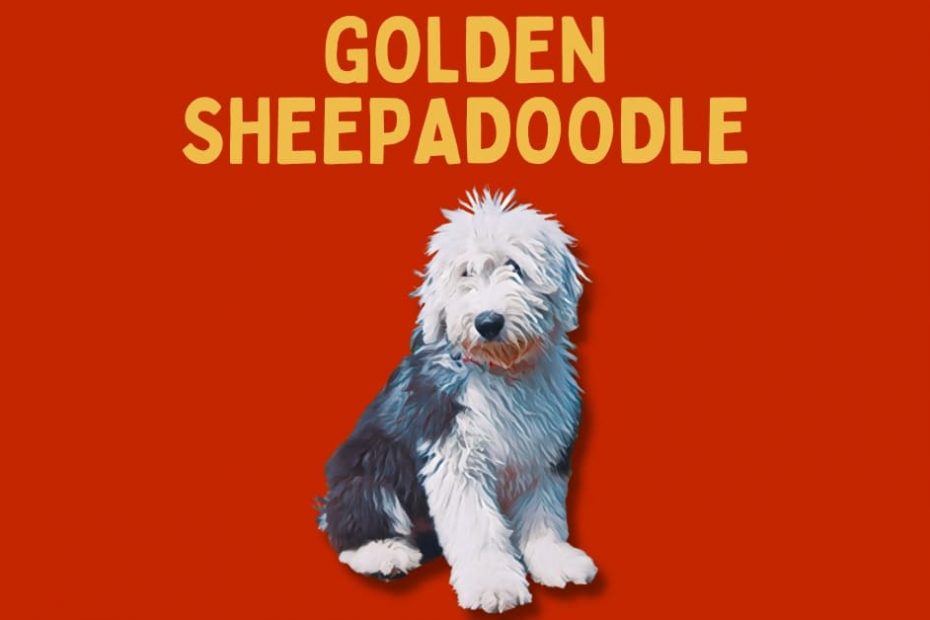The Golden Sheepadoodle is a new and very unique Doodle breed. It is a mix of the Sheepadoodle and a Golden Retriever or Goldendoodle. It is the ‘king‘ of Doodles because it mixes the ever-popular Goldendoodle and the infamous Sheepadoodle.
This lovable mixed breed is known for its intelligence, friendliness, and playful nature. In this guide, we’ll explore the history of this unique combination of breeds and the traits that make it such an ideal pet.
What is a Golden Sheepadoodle?
The Golden Sheepadoodle is a Doodle dog breed that combines the intelligence and loyal nature of a Sheepadoodle (a Standard Poodle crossed with an Old English Sheepdog) and the Golden Retriever, a gentle and fun breed.
The other combination that can create a Golden Sheepadoodle is a mix between a Goldendoodle and a Sheepadoodle. Either way, the Golden Sheepadoodle is a mix between the Poodle, the Old English Sheepdog, and the Golden Retriever – but the genetic makeup of a Golden Sheepadoodle may vary between breeders.
Other names for the Golden Sheepadoodle are Sheepadoodle-Golden Retriever Mix and the Sheepadoodle-Goldendoodle Mix.
History of the Parent Breeds
Before we discuss the unique traits and temperament of the Golden Sheepadoodle, let’s learn a little more about the history of each of the parent breeds that contribute to the genetic makeup of this dog.
Sheepadoodle

The Sheepadoodle breed is a relatively new hybrid breed. It was initially developed in the early 2000s when an Australian breeder crossed a Standard Poodle with an Old English Sheepdog.
The resulting puppies were affectionately nicknamed “Sheepadoodles” and have since become popular family pets worldwide.
Sheepadoodles can be bred using Standard Poodles, Medium Poodles, or Mini Poodles, resulting in Sheepadoodles of all different sizes.
Old English Sheepdog (OES)
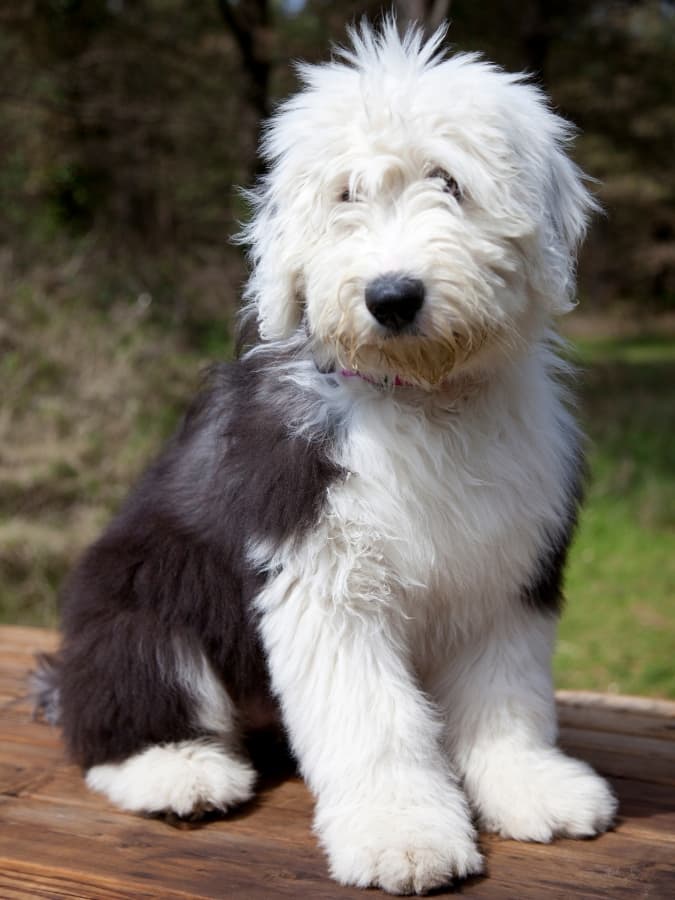
The Old English Sheepdog is a breed that dates back to the 1700s. Its origin is believed to be in the south of England, where it was used as a herding dog on farms and estates.
The breed has since been used to guard livestock, participate in farm work, and even be kept as family pets.
In 1873, the breed was first recognized by the Kennel Club of England and has been popular in Britain.
In the United States, the first record of the OES appeared in the 1880s when William Wade, a Pittsburgh native, introduced them. The OES rapidly rose to popularity among some of America’s wealthiest families [1]oldenglishsheepdogclubofamerica.org/history.
Owners say they’re “sweet, even-tempered, and like life-sized teddy bears,” alluding to the shaggy hair the OES is famous for [2]youtube.com/watch?v=e5HsAwFbP_8.
The Old English Sheepdog has a thick and fluffy coat that can be wavy or straight. Coat colors typically vary between shades of gray, black, blue, white, and sometimes brown.
They have a double-layered coat that protects them from rain, snow, and cold temperatures and against dirt and debris. The inner layer is short and dense, while the outer layer is long and wavy.
The texture of their coat can range from soft to rough and may also have some curls or tufts in it [3]akc.org/dog-breeds/old-english-sheepdog.
Goldendoodle
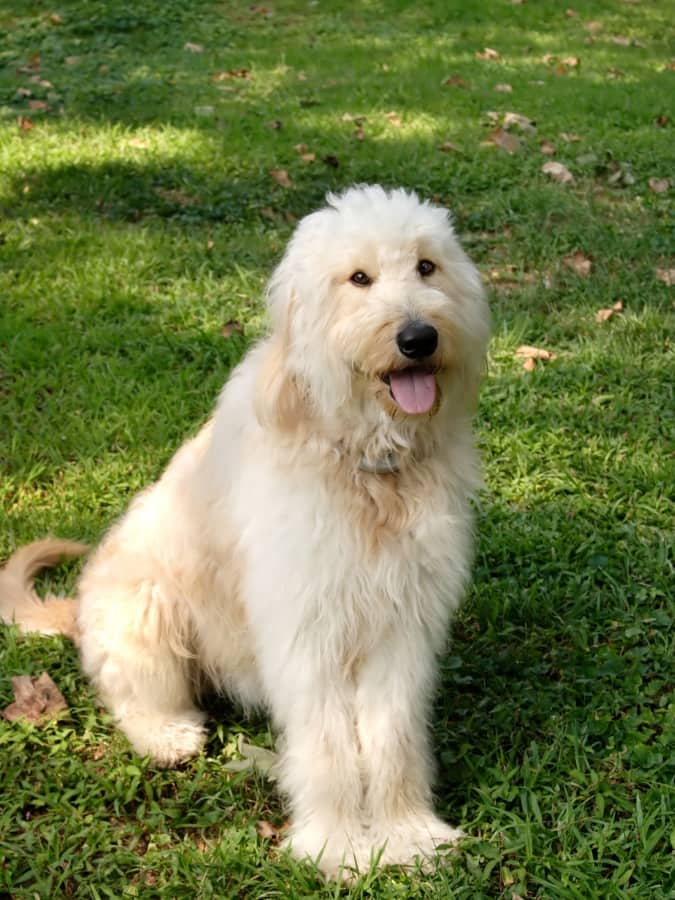
The Goldendoodle is a relatively new breed of dog that originated in the early 1990s. It is a hybrid cross between the Golden Retriever and Poodle breeds.
The Goldendoodle has become increasingly popular over the past two decades due to its affectionate, intelligent, and loyal nature.
They also tend to be low or non-shedding, appealing to allergy sufferers. One owner says they are “intelligent, kind, loving, and loyal.“ [4]youtube.com/watch?v=GcQuZC5-kkM
Goldendoodle Appearance
Goldendoodles have a variety of coat types and colors. The most popular is the curly-haired coat with an apricot, red, or caramel color. However, some Goldendoodles may also have wavy coats that can come in any color imaginable.
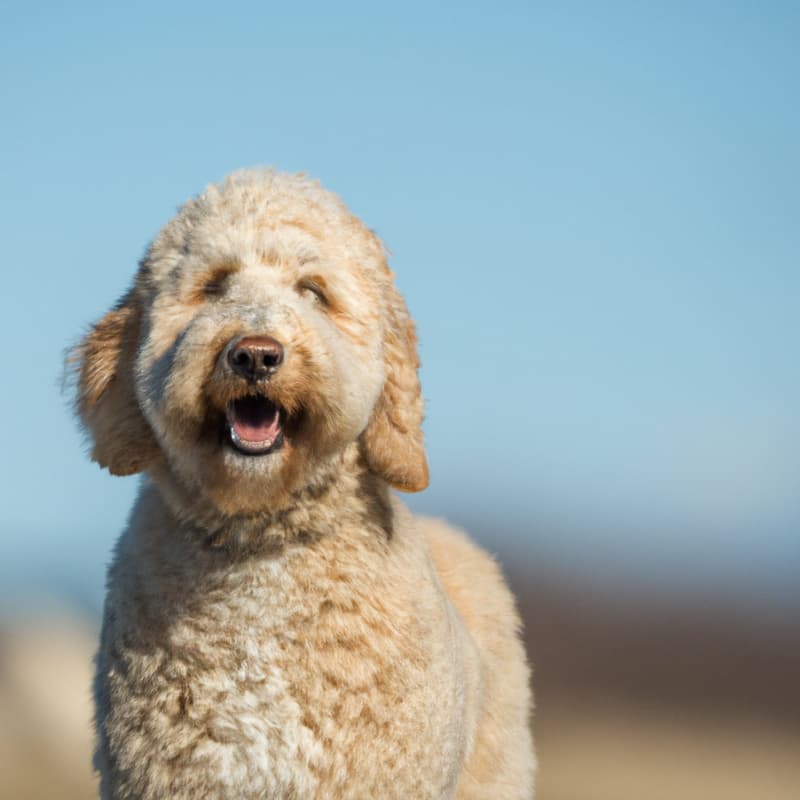
Some breeders specialize in rarer colors, such as silver, blue, and chocolate. Goldendoodles’ coats are usually low-shedding and hypoallergenic, making them a popular choice for those with allergies.
Regarding the coat type, some Goldendoodles tend to be corded like a Poodle or have an open coat like a Golden Retriever [5]rover.com/blog/breeds/goldendoodle.
Golden Retriever
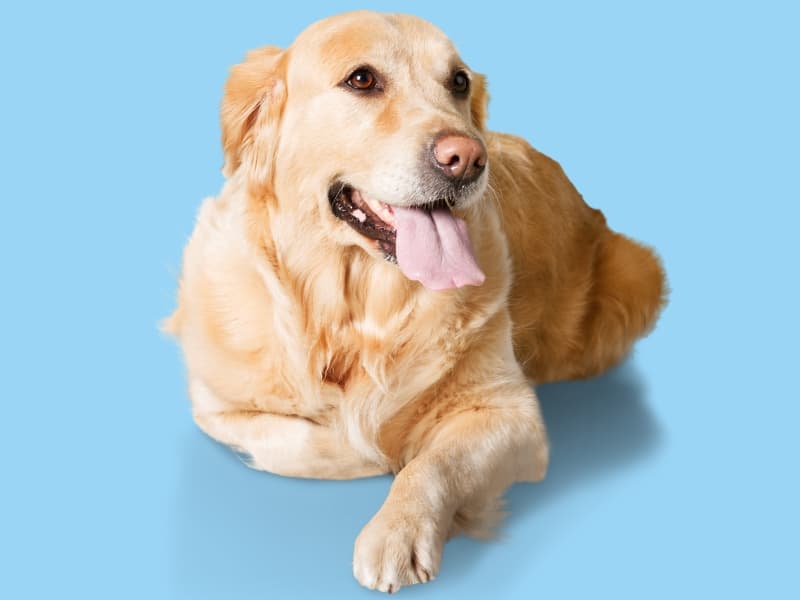
The Golden Retriever is a breed of dog originally bred in Scotland for retrieving game. It has been associated with the aristocracy since the 1800s and was used as a working dog by royalty and other high-ranking members of society.
The first Golden Retrievers were bred in the mid-19th century from yellow flat-coated Retrievers, Tweed Water Spaniels, and other gundogs.
The American Kennel Club officially recognized the breed in 1925 [6]akc.org/expert-advice/dog-breeds/behind-the-breed-golden-retriever-history.
Several owners praise the Golden Retriever as a “cuddly, loyal, and lovable” dog [7]youtube.com/watch?v=5ssz2CI_PQM.
Golden Retriever Appearance
The Golden Retriever is a medium-sized dog breed that typically has a light to dark golden coat. The length of the coat can vary from short and straight to lengthy and wavy, but it’s usually quite thick and full.

Common color variations include cream, white, red, black, brown, or yellow. The head often has a white or light-colored muzzle, and the ears are usually fringed with feathery hair.
The Golden Retriever’s tail is feathery and long and often ends with an attractive flag. It is important to note that the colors of any Golden Retriever can vary from pet to pet, as each has its unique coloring [8]akc.org/dog-breeds/golden-retriever.
Poodle
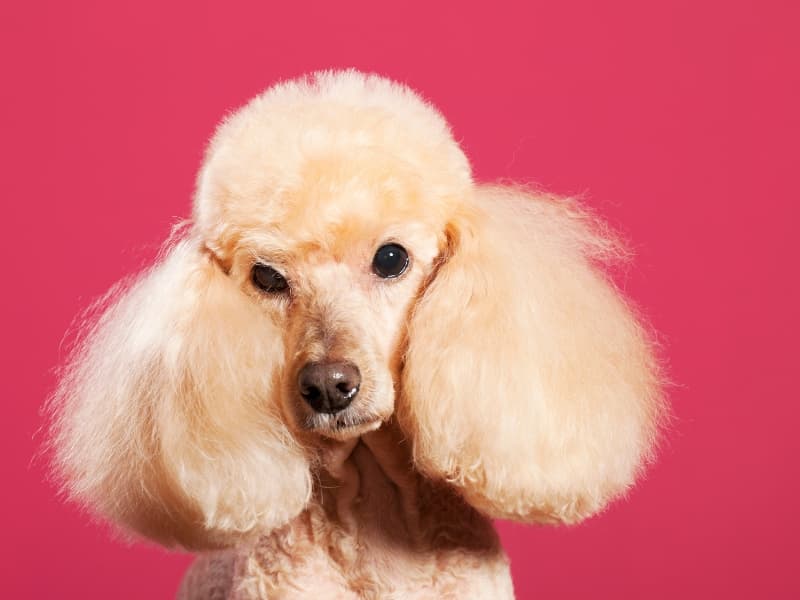
The Poodle breed originated in Germany and was initially bred for waterfowl hunting [9]ukcdogs.com/standard-poodle.
The Poodle’s unique coat and swimming ability made them an ideal waterfowl retriever, which led to the breed’s popularity, first in France with the aristocracy and much later in America [10]akc.org/expert-advice/lifestyle/10-facts-about-poodles.
Poodles are among the most popular breeds worldwide due to their intelligence, loyalty, and playful personalities.
They are described as “smart, loving, and athletic” by standard Poodle owners [11]youtube.com/watch?v=_Pw-39u9344.
Poodle Appearance
The standard Poodle is considered a large dog, while miniature and toy varieties are much smaller. The Poodle is a breed of dog that comes in three sizes: Standard, Miniature, and Toy.
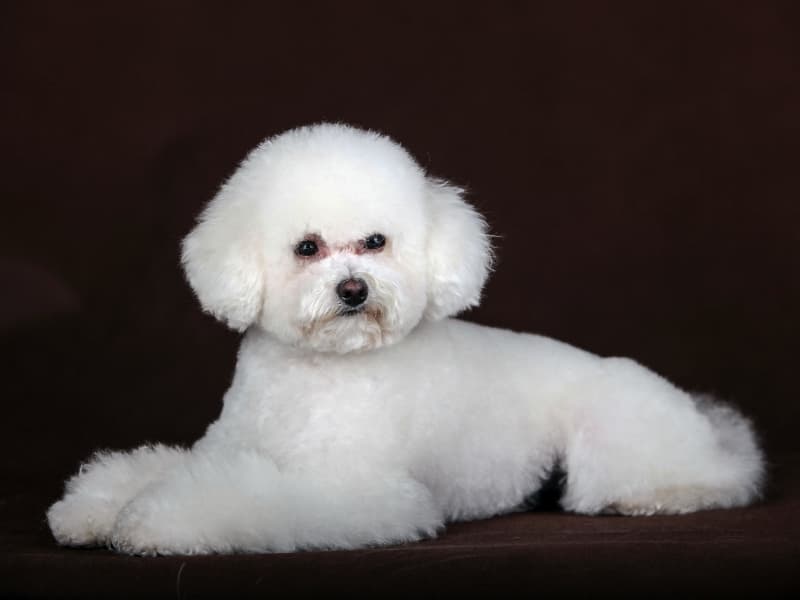
All three types share the same coat type, characterized as curly, dense, and coarse. The coat can come in many colors, such as black, apricot, white, silver, blue, and brown [12]akc.org/dog-breeds/poodle-standard.
What does a Golden Sheepadoodle look like?
The Golden Sheepadoodle has a long, curly coat that is soft and luxurious to the touch. They come in various colors ranging from white to cream, apricot, red, black, gray, and brown. Their coats can be either single or double-coated, with their undercoat softer than the outer guard hairs.
Golden Sheepadoodle Pictures
Coat Type
The Golden Sheepadoodle has a unique and beautiful coat type. Their coats are generally long, thick, and curly in texture, with some wavy or kinky hair mixed in.
The undercoat is usually softer than the outer guard hairs and gives the coat a fluffy appearance. They have lower-shedding coats that require regular grooming to keep them looking their best.
Coat Color
The coat colors that come in a Golden Sheepadoodle can vary, but the most common are:
- Apricot
- Red
- Cream
- Golden
- Blonde
- Silver
- Chocolate
- White
- Sable
The Golden Sheepadoodle may have unique coat patterns or markings. They can have a solid coat color with white or black markings. Merle, phantom, tricolor, and tuxedo can also coat patterns.
How big is a Golden Sheepadoodle?
A Golden Sheepadoodle is a hybrid or designer dog breed created by crossing an Old English Sheepdog with a Standard Poodle. When fully grown, these dogs can range from 50-80 pounds in weight, making them a medium to large-sized breed.
However, if you get a medium or mini Golden Sheepadoodle, expect weights closer to 40-65 pounds (Medium) or 25-45 pounds (Mini).
The height of a full-grown Golden Sheepadoodle is usually anywhere from 15-28 inches tall, depending on the dog’s genetic makeup – and the height will begin to decrease if you are looking for a Medium or Mini Golden Sheepadoodle.
Traits & Characteristics

Temperament & Personality
The Golden Sheepadoodle is an affectionate and loving breed that loves to be around people. They are intelligent and eager to please, making them easily trainable. However, because they are a hybrid breed, their temperaments can vary greatly depending on the individual dog’s genetic makeup.
For example, dogs with more Golden Retrievers may be more outgoing and affectionate, while those with more Goldendoodle or Shepadoodle (or both) in them may be more reserved and aloof.
The amount of Sheepdog genes also influences the temperament, with dogs with a lot of Sheepdog being independent and strong-willed. Regardless of the makeup of the individual dog, all members of this breed are known for being friendly and loving, making them great family pets.
The Golden Sheepadoodle also tends to have a high energy level, making it difficult to tire out. They need plenty of exercise and mental stimulation to stay happy and healthy.
Common Health Problems
While Golden Sheepadoodles tend to be healthy, happy dogs, it’s worth noting that they are predisposed to the conditions of all three dog breeds that contribute to their genetic makeup.
The most common health problems for Golden Sheepadoodles are:
- Hip dysplasia
- Eye problems such as progressive retinal atrophy
- Skin issues such as allergies
- Bloat, which is a life-threatening condition that can occur if the dog eats too quickly or exercises after eating
- Ear infections due to their long and floppy ears
- Luxating patellas, which is when the kneecap slides out of its usual location
- Heart diseases such as mitral valve disease and dilated cardiomyopathy
- Hypothyroidism, which can cause problems with weight gain and hair loss
- Obesity
- Joint problems such as arthritis and hip dysplasia
- Gastrointestinal issues
- Allergies and sensitivities to certain foods or environmental allergens.
- Heat and cold sensitivity due to their long coats
- Hypoglycemia, or low blood sugar, can occur in young puppies.
- Bladder problems such as urinary tract infections and stones.
- Epilepsy
Diet
When it comes to feeding a Golden Sheepadoodle, owners must provide them with high-quality dog food formulated specifically for the size of the Golden Sheepadoodle.
Owners should look for food that contains essential fatty acids such as omega 3 and 6 to help promote healthy skin and coat. Additionally, protein sources should be included in the diet.
Owners should also make sure their Golden Sheepadoodle is receiving the proper amount of vitamins and minerals via their food or nutritional supplements to ensure a balanced and healthy diet. Owners should avoid feeding their dog table scraps or human food as it can cause digestive upset.
It is important to note that Golden Sheepadoodles may require more calories than a typical dog of their size due to their active lifestyle. Owners should consult with their veterinarian or nutritionist to ensure they provide the correct amount of food for their particular Golden Sheepadoodle.
Lifespan
The average lifespan of the Golden Sheepadoodle is approximately 10 to 13 years.
As with any dog, proper nutrition and regular veterinary care are essential in maintaining your pet’s long and healthy life. Good quality food and plenty of exercise are necessary for the health and longevity of all dogs, including the Golden Sheepadoodle.
Grooming
Grooming a Golden Sheepadoodle is relatively easy and enjoyable for owners. Because of their hybrid, the Golden Sheepadoodle has an average coat that does not require much maintenance.
It should be brushed weekly to remove dirt and debris and help keep its coat looking healthy and minimize shedding. Depending on the individual’s needs, regular baths are recommended to keep the coat clean and to prevent skin infections.
Nails should be kept trimmed to ensure the feet of the dog do not suffer from any pain or discomfort due to long nails. Additionally, regular nail trims are essential for a healthy Golden Sheepadoodle. Regularly checking the ears and eyes for any dirt or infection is important and can be done with a damp cloth.
Finally, regular dental care is essential in keeping your Golden Sheepadoodle’s teeth clean and healthy. This can be achieved by providing them with chew toys to help keep their gums healthy and plaque-free.
Exercise Requirements
The Golden Sheepadoodle is an active and energetic breed that requires regular exercise to stay healthy. They enjoy long walks, hikes, running, playing fetch, and swimming.
Owners should ensure they provide their dogs with at least one hour of exercise every day to keep them physically fit and mentally sharp.

References

